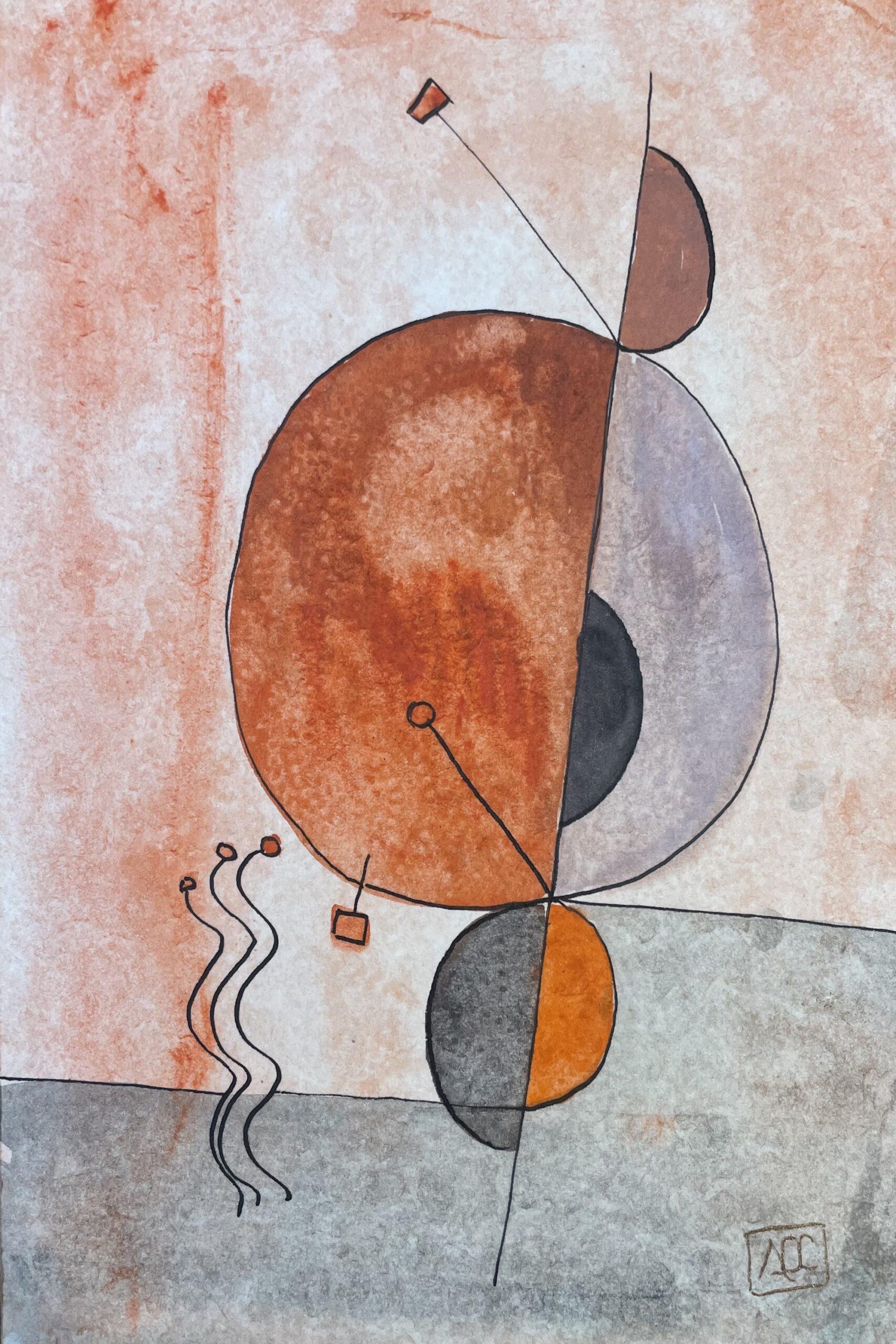“Color is the keyboard, the eyes are the harmonies, the soul is the piano with many strings.” — Wassily Kandinsky
Can We See Music? Can We Hear Color?
These are the questions that have haunted me since the beginning of my artistic journey. My exploration of harmony and synesthetic painting owes much to Wassily Kandinsky, the pioneer who dared to translate sound into visual art. His use of color as an independent force—detached from representation, yet deeply emotional—has shaped my approach to painting.
Kandinsky did not simply paint; he composed. And in many ways, I feel like I am following the same path—seeking the invisible threads that connect sound, emotion, and color in a symphony of visual form.
Kandinsky’s Vision: The Sound of Color
Kandinsky believed that every color had its own voice, its own inner vibration.
• Yellow was a “trumpet blast”—sharp, eccentric, full of life.
• Blue was deep, infinite—like the soft echo of a cello.
• Red had warmth, like a strong, persistent violin note.
• Green? A peaceful, middle note, like a calm harmony.
For him, a painting was never silent. It was a score, an orchestration of forms and colors that could evoke the same emotional resonance as a musical composition.
How Did This Influence My Work?
When I started developing my Synesthetic Collection, I found myself drawn to the same logic—letting colors play as musical notes, creating a visual harmony that echoes sound. I began to map musical chords to specific hues, inspired by the way Kandinsky assigned personalities to colors.
Would a B♭ major chord feel more like a warm, deep violet?
Could an A minor arpeggio take the shape of flowing blue and red lines?
I started experimenting—not just painting what I saw, but what I heard.
From Kandinsky’s Abstraction to My Synesthetic Compositions
Kandinsky’s works such as Composition VIII or Yellow-Red-Blue are masterclasses in balance, rhythm, and movement. His forms are not random; they are structured like a melody—sometimes dissonant, sometimes harmonious.
In my own paintings, I take this principle a step further. Rather than composing a visual “melody,” I explore the tension of harmony itself.
• What happens when colors clash like dissonant notes?
• How can I visually represent the resolution of a chord?
• Can a single color shift the entire balance, just as a single note changes the emotional weight of a melody?
Where Kandinsky used sharp geometric contrasts, I experiment with fluidity—letting colors blend and dissolve like overlapping sound waves. But the core principle remains the same: painting is music, and music is painting.
Synesthetic Harmony: Painting Beyond Sight
I often wonder—if Kandinsky had access to modern neuroscience, would he have considered himself a synesthete? His writings suggest an intuitive understanding of color-sound relationships that synesthetes naturally experience.
For me, the Synesthetic Collection is more than an abstract exercise. It is a deep personal exploration—a way to make the invisible visible. Kandinsky gave us a language to discuss the music of color, and now I am expanding that vocabulary into a system of harmony, resonance, and emotional landscapes.
The Unfinished Symphony
Kandinsky opened the door. I step through it. But the journey is far from over. Each painting is another note, another chord in an unfinished symphony of visual music.
So I ask you:
When you look at a painting, do you hear its sound?
And if you do—what does it whisper to you?
Let’s explore together.
